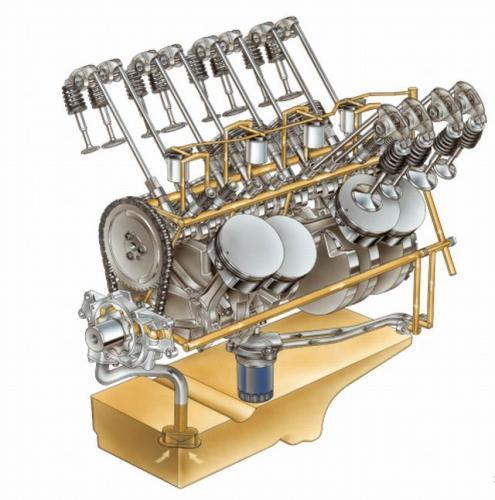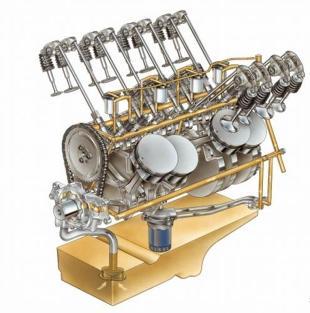
How to manage?
 The gas distribution mechanism is responsible for the flow of the air-fuel mixture into the cylinders and the removal of combustion products from them.
The gas distribution mechanism is responsible for the flow of the air-fuel mixture into the cylinders and the removal of combustion products from them.
The condition for the operation of the engine is to ensure the flow of the fuel-air mixture into the cylinders and the removal of combustion products from them. These important functions are performed by the distribution mechanism.
For each engine cylinder there are sections consisting of at least two valves (inlet and exhaust), more often three, four or five, and their actuators. They allow the valves to open when the piston is in the correct position in the cylinder. The design of the engine and its speed determine the type of mechanism used. One of the criteria is  the need to minimize the influence of the inertia of moving parts on the accuracy of valve opening.
the need to minimize the influence of the inertia of moving parts on the accuracy of valve opening.
Types of Timing Systems
The first type of mechanism was a low-valve gas distribution mechanism. It was replaced by a more modern solution - an overhead valve timing mechanism, in which all valves are located in the cylinder head. These are hanging valves pointing down. The advantage of this solution is the freedom to accommodate valves with sufficiently large diameters. The disadvantage is the large number of components and the need to ensure sufficient rigidity of the intermediate elements of the power transmission. This type of timing mechanism is commonly used in passenger car engines.
How many valves
Currently, each cylinder has two, three, four or five valves. The multi-valve system provides a high degree of filling the cylinder with a mixture,  increases valve plug cooling, reduces valve opening variation and valve closing delay. Therefore, it is more beneficial for the engine, and also more durable than a two-valve one.
increases valve plug cooling, reduces valve opening variation and valve closing delay. Therefore, it is more beneficial for the engine, and also more durable than a two-valve one.
OHV or OHS?
In an overhead valve, the valve stems can be driven by a single shaft located in the engine housing - this is the OHV system or in the head - the OHC system. If the valves are driven by two different shafts located in the head, this is called a DOHC system. Depending on the design, the valves are actuated either directly from the shaft cams or via pressure transmitting levers between the cam and the base of the valve stem. The intermediate element is the pusher. Currently, maintenance-free tappets with hydraulic valve clearance compensation are used. Today, OHC or DOHC are commonly used in European and Japanese engines. The OHV system is already used in several engines, such as the American HEMI.
Geared torques from the crankshaft to the camshaft are transmitted through gears, chains or belt drives using a toothed belt. The latter solution does not require lubrication, is wear resistant and does not overload the bearings. Most often used in modern cars.

